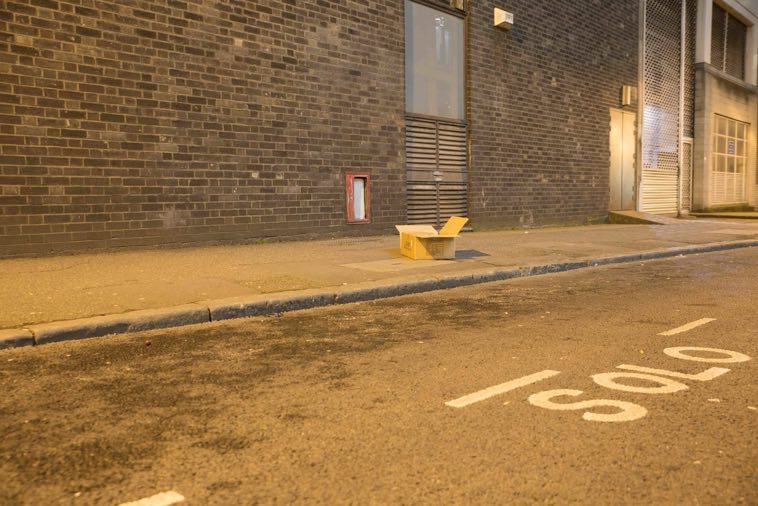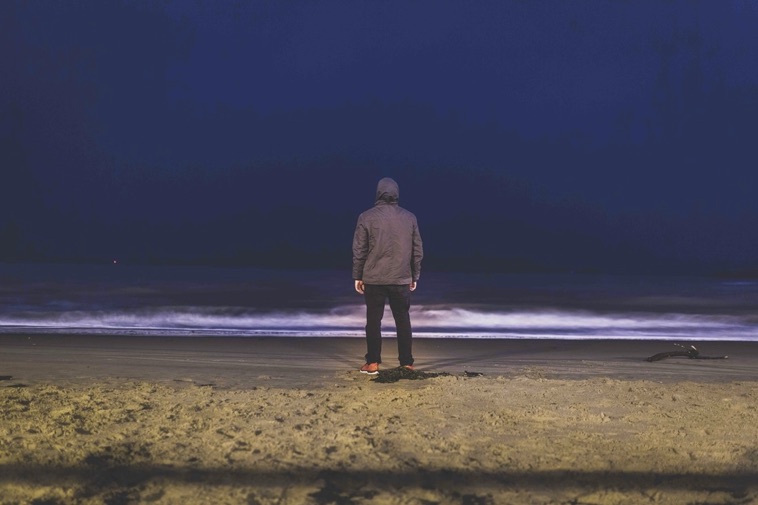The end of module 1 sees us facing a blank abyss of teaching-free time, time that I’d secretly hoped to fill with back to back Mad Men episodes.
Don Draper thinking about lying down on his sofa in Mad Men
Now this was possibly just because I’d forgotten how appealing it was to imagine a world where I could spend the majority of my working day lying down on a sofa, but it was mainly because I’d found the process of preparing the end of module assignments really gruelling. So I was looking forward to the mental break.
The week 13 work was mercifully light, with a teaser for module 2 and an introduction to the photographic work of Ed Ruscha, an artist I’ve been inspired by since visiting his retrospective at the Hayward Gallery back in 2009.
The week ended with a challenge, a mini project to produce a series of images as a small book in response to Ruscha’s books.
Ed Ruscha, shot by Hedi Slimane, 2009
This activity instantly fired my imagination...I love the literality of Ruscha’s photographs, how lacking in self-consciousness they appear.
He seems to take an almost disinterested look at his subject, presenting it simply as it is, with no additional photographic angle added.
He’s not trying to romanticise or polemicise, he’s just showing stuff and the rest is up to the viewer.
His various interviews over the years seem to support this idea, of photography as something he uses simply as a tool to do a job.
But I remember seeing some big prints of his aerial car park images at the Constructing Worlds exhibition a few years back and being really astonished by the beauty and visual interest he’d managed to extract from such an apparently mundane subject. If I’m honest, I’m not sure I’m totally buying his total nonchalance about photography, but whatever the case I was looking forward to getting into this activity.
I considered a few different ideas, initially planning to shoot car parks (I’ve always been interested in them), then thought about shooting old cars.
Around about this time we received our assignment feedback, which I found pretty deflating, so with the words of Don Draper ringing in my ears I decided I really needed to do something different for this project, just to mix things up and shake it off.
So...
I ended up shooting rubbish!
As I walked around my neighbourhood I was struck by how much stuff people just dump on the streets. I’d never quite appreciated this before and having left my house in search of old bangers I turned to shooting bins and urban debris.
I’d already decided I was going to be shooting exclusively during the day as a departure from my usual practice. In response to Ruscha’s work I wanted to shoot in a nimble, ‘artless’ manner. This also seemed appropriate for the subject matter. So all images would be made using my phone.
I’d been wanting to experiment with making a book and had in fact included this in my project proposal. I’d only recently realised I could make books via Lightroom, so decided this would be a good chance to get my head around that as well. So the brief was set, I was going to shoot rubbish on the streets with my phone and create a book using Lightroom.
This process was really interesting and enjoyable. I enjoyed just walking round my local area, something I never usually do, and my wandering took me to places I’ve not seen before. I enjoyed the process of just being observant during the daytime, really taking in my environment. Maybe everything interesting doesn’t happen at night after all!
Contrary to my usual practice, I walked around listening to music, casually snapping away whenever I came across something that was interesting. I was much less concerned with line, light or composition and just made photos in each case and moved on. I found this quite liberating too, with less ‘riding’ on each shot.
In keeping with the subject matter, final image selection was not especially discerning and the edits in Lightroom were minimal (again, in contrast to my usual practice) and then I moved on to putting the book together. One of the unavoidable conclusions from walking around shooting was that we’ve got too much stuff. There’s so much stuff just discarded, unceremoniously chucked out, its fate unknown – nobody seems to care that we’re polluting our own neighbourhoods just to get rid of the things we don’t want any more. It’s nuts!
This conclusion influenced the way I approached the book. I’d taken these simple iPhone photographs of rubbish. It seemed nonsensical to produce a glossy archival hardback book of these photos. Equally, I can’t ignore the fact that whatever I produce is likely to end up contributing to the pile of crap on the pavement at some point in the future, so I felt that a small simple book with images on basic paper, with soft cover, would be the way forward.
Since producing the book, I’ve thought about how these images might be better displayed in a more congruent way. On one hand there’s the ironic angle where the book is presented with lots of packaging in a big cardboard box filled with crepe paper and an accompanying essay about the evils of modern capitalism and consumer culture. Almost like rubbish as a collectible. On the other hand, it seems wrong to produce a book at all. A book of rubbish photos about rubbish is destined for only one place…so why do it?
I have thus resolved to create a digital display of the images with an accompanying statement that hopefully explains the rationale behind the decision to display them in this way and the idea underpinning the project.
I feel like there’s more in this project and will have more to say in due course.












